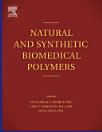Bio-Instructive Scaffolds for Musculoskeletal Tissue Engineering and Regenerative Medicine
Nov 2016 · Academic Press
Ebook
252
Pages
family_home
Eligible
info
reportRatings and reviews aren’t verified Learn More
About this ebook
Bio-Instructive Scaffolds for Musculoskeletal Tissue Engineering and Regenerative Medicine explores musculoskeletal tissue growth and development across populations, ranging from elite athletes to the elderly. The regeneration and reparation of musculoskeletal tissues present the unique challenges of requiring both the need to withstand distinct forces applied to the body and ability to support cell populations. The book is separated into sections based on tissue type, including bone, cartilage, ligament and tendon, muscle, and musculoskeletal tissue interfaces. Within each tissue type, the chapters are subcategorized into strategies focused on cells, hydrogels, polymers, and other materials (i.e. ceramics and metals) utilized in musculoskeletal tissue engineering applications. In each chapter, the relationships that exist amongst the strategy, stem cell differentiation and somatic cell specialization at the intracellular level are emphasized. Examples include intracellular signaling through growth factor delivery, geometry sensing of the surrounding network, and cell signaling that stems from altered population dynamics. - Presents a self-contained work for the field of musculoskeletal tissue engineering and regenerative medicine - Focuses on how materials of structures can be designed to be resistant while promoting viable grafts - Contains major tissue types that are covered with a strategy for each material and structure
About the author
Justin Brown is an Associate Professor of Biomedical Engineering at the Pennsylvania State University. He received his Ph.D. (Biomedical Engineering) and studied as a postdoctoral fellow (Cell and Molecular Biology) at the University of Virginia. His Ph.D. research focused on the use of novel biodegradable polyphosphazenes and poly(L-lactide) to construct novel scaffolds for bone tissue engineering presenting both micro and nanostructures. His postdoctoral research focused on MAPK signaling in osteoblasts in response to synthetic nanofiber architectures. His current research interests are fundamental mechanisms stem cells use to sense and respond to translational biomaterial interfaces.Dr. Kumbar is an Assistant Professor in the Departments of Orthopaedic Surgery, Materials Science & Engineering and Biomedical Engineering at the University of Connecticut. His research is focused on synthesis and characterization of novel biomaterials for tissue engineering and drug delivery applications. These polymeric materials namely polysaccharides, polyphosphazenes, polyanhydrides, polyesters as well as blends of two or more of the polymeric materials and composites combining the polymeric materials with ceramics in the form of 3-dimentional porous structures will serve as scaffolds for variety of tissue engineering applications. Dr. Kumbar is an active member of Society for Biomaterials (SFB), Controlled Release Society (CRS), Materials Research Society (MRS) and Orthopaedic Research Society (ORS). Dr. Kumbar is serving as a reviewer for more than 25 journals in the field of biomaterials, drug delivery and tissue engineering. He has recently edited a book "Natural and Synthetic Biomedical Polymers Elsevier Science & Technology, 2014- ISBN: 978-0-12-396983-5. He is also on the Editorial Board of more than 7 journals in the area of his expertise including Journal of Biomedical Materials Research-Part B, Journal of Applied Polymer Science, and Journal of Biomedical Nanotechnology.Brittany Banik is a Graduate Research Assistant in the Department of Biomedical Engineering at The Pennsylvania State University. She received a B.S. in Bioengineering and minor in Mathematical Sciences from Clemson University. She currently works as a National Science Foundation Graduate Research Fellowship Program (NSF GRFP) fellow in Dr. Justin Brown's Musculoskeletal Regenerative Engineering Laboratory. Her Ph.D. research investigates a novel scaffold design for tendon tissue engineering. She has previously been involved in projects related to nanomedicine, drug delivery, and cellular mechanotransduction.
Rate this ebook
Tell us what you think.
Reading information
Smartphones and tablets
Install the Google Play Books app for Android and iPad/iPhone. It syncs automatically with your account and allows you to read online or offline wherever you are.
Laptops and computers
You can listen to audiobooks purchased on Google Play using your computer's web browser.
eReaders and other devices
To read on e-ink devices like Kobo eReaders, you'll need to download a file and transfer it to your device. Follow the detailed Help Center instructions to transfer the files to supported eReaders.




